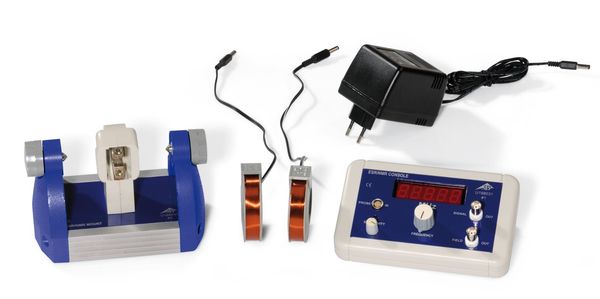
Technical data Electron spin resonanceArticle no: P2511201  Principle With electron spin resonance (ESR) spectroscopy compounds having unpaired electrons can be studied. The physical background of ESR is similar to that of nuclear magnetic resonance (NMR), but with this technique electron spins are excited instead of spins of atomic nuclei. The g-factor of a DPPH (Diphenylpikrylhydrazyl) specimen and the halfwidth of the absorption line are determined, using the ESR apparatus. Benefits
Tasks
Learning objectives
Scope of delivery
| |||||||||||||||
PHYWE Systeme GmbH & Co. KG
Robert-Bosch-Breite 10 – 37079 Göttingen – Germany
www.phywe.com
Robert-Bosch-Breite 10 – 37079 Göttingen – Germany
www.phywe.com

